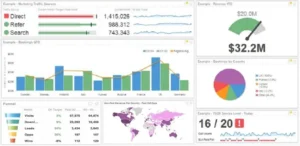We all know how innovative and forward-looking Salesforce is. With all that innovation and new product development also comes some feature retirement. Out with the old, in with the new and better. If you’re still actively using a feature that’s being retired you need to know how and when to transition. Cloud Next Level can help you with that! Here’s some info about how Salesforce handles feature retirements and what you need to be thinking about right now.
Fortunately, Salesforce follows some general guidelines when retiring features. When possible, they give at least 12 months notice that a function is retiring, with reminders as the retirement date approaches. They always have recommended alternatives and are committed to support the retiring feature up to the retirement date. And as a general rule, retirements will coincide with new releases when possible. For a comprehensive look at how Salesforce retires features read THIS article.
So, what feature retirements should you be planning for this summer with the Summer ’20 Release? Here’s a few along with the information you need to make the transition smooth.
Marketing Cloud – Classic Content Creation.
Classic Content Email Create functionality will be disabled in June 2020 and Classic Content Email Edit functionality will be disabled in  January 2021. After January 2021 you will only be able to view emails previously created with the Classic Content tools.
January 2021. After January 2021 you will only be able to view emails previously created with the Classic Content tools.
Customers will be required to use Content Builder for all email content after June 2020.
Content Builder is Salesforce’s latest email content creation tool that was initially offered in 2016, and includes enhanced functionality not available in classic content creation tools.
Looking to make the transition to Content Builder now? Salesforce has a help document located here. And moreinformation will be provided at a later date that will have additional resources, including available open office hours and scheduled webinars, to help you walk through the transition to Content Builder.
Agent Console (also known as Console Tab or Legacy Console)
Agent Console will be retired in the Summer ‘20 Release. After the retirement date, users assigned with the Agent Console layout will no longer be able to access the feature.
This retirement should have limited impact since the Agent Console feature has not been actively enhanced since the Spring ‘11 release and has not been available to new customers since the Spring ‘15 release. Lightning Console contains all of the functionality available in the Agent Console and is now available to customers in a more modern, productive and feature-rich user interface.
If by chance you are a legacy user of this feature you need to take the following steps:
Agent Console users must be transitioned to the Lightning Console. To identify which users are using the Agent Console:
- Go to ‘Setup,’ then ‘Profiles,’ and select a Profile
- On the profile detail page, look for Console Settings.
- Select ‘Edit,’ next to ‘Console Layout.’
On the Console Layout Assignment page, you can view which profiles are assigned to the Agent Console Layout.
Legacy Folder Sharing
Salesforce is planning to retire Legacy Folder Sharing in the Summer ’20 release as they focus their efforts on Enhanced Folder Sharing.
 This will be an easy transition with no steps needed on your part. With the Summer ‘20 release, customers using Legacy Folder Sharing will automatically be upgraded to Enhanced Folder Sharing. If, however, you chose to enable Enhanced Folder Sharing before the Summer ’20 release follow these steps:
This will be an easy transition with no steps needed on your part. With the Summer ‘20 release, customers using Legacy Folder Sharing will automatically be upgraded to Enhanced Folder Sharing. If, however, you chose to enable Enhanced Folder Sharing before the Summer ’20 release follow these steps:
- FromSetup, enter ‘Folder Sharing‘ in the Quick Find
- SelectFolder Sharing.
- SelectEnable access levels for sharing report and dashboard folders.
- ClickSave.
Take time to review your permissions once you enable Enhanced Folder sharing to ensure the report and dashboard folders in your organization have the appropriate sharing settings. In Legacy Folder Sharing, there were only two levels of access, but now the Enhanced version has an additional access level called Editor. You’ll want to make sure everyone has access to what they need before the need it.
Salesforce Mobile Web Experience
The Mobile Web Experience is the mobile browser version of the mobile app and has sometimes been referred to as “Salesforce 1” or one.app. This option allowed you to use a browser-based version that closely resembles the old Salesforce mobile app. You can tell you’re using the Mobile Web Experience by the dark blue left navigation bar. Salesforce is planning to retire the Salesforce mobile web experience with the Summer ’20 release. They want to focus development on enhancing the Salesforce mobile app to ensure you have a consistent and quality experience.
Most of you are already using the Lightning Experience Mobile App on your devices but if you are not and want some guidance in your transition check out the Salesforce Mobile App page to learn more about the Salesforce mobile app and its features.
For those industries that limit the use of mobile device apps for regulatory reasons Salesforce is working on a set of features called Mobile Application Management that lets IT departments monitor and control specific apps on your device without controlling the entire device. This set of features will allow customers in regulated industries to use the mobile app without risking a breach of regulations. Salesforce is working on a comprehensive security solution with features like jailbreak detection, network integrity, and dozens of other policies that will make it possible for regulated customers to run the genuine mobile app. It’s not available yet, but it’s coming soon.
Legacy versions of Open Commerce API (OCAPI)
Salesforce is planning to retire the legacy versions of Open Commerce API (OCAPI) 16.x and below on July 1, 2020 (Note: this retirement will not coincide with the Salesforce ’20 release)
Salesforce wants to focus development on the latest API version to improve security and performance, which led them to the decision to retire the legacy Open Commerce API versions.
This retirement may mean significant development for your team if you are still using the legacy version. You will need to rebuild your applications to use the latest OCAPI version available to prevent any disruption to applications that are currently using the legacy versions.You should review their version dependencies and determine where you might be using older versions of OCAPI endpoints. Salesforce can assist with this by providing you with the list of endpoints and your versions that they are calling if needed.
However, it will still be up to you and your development teams to determine where in their code they are making these calls. Salesforce makes the following suggestion:
“Upon determining the endpoints that need to change your development team should begin updating those endpoints to the newer versions and run their suite of tests to determine the effects that the change might have on their commerce site(s). Full regression tests related to the changed areas of code would be suggested.”
Customizable Forecasting
Customizable Forecasting will be retired in the Summer ’20 release. Salesforce is recommending that you migrate your users to Collaborative Forecasts before the retirement date. This replacement feature, Collaborative Forecasts, has improved functionality over Customizable Forecasting and as a result, your experience with forecasting will be enhanced. 
To prepare for this change you’ll need to run a standard Users report. Users with access to Customizable Forecasting will have to have their Allow Forecasting permission set to True.
Salesforce is strongly recommending that you and your users migrate to Collaborative Forecasts, and if necessary, export forecasting data out of Customizable Forecasting before the retirement date in June. You can do this by following the Configure Collaborative Forecasts Help topic as well as the Collaborative Forecasts Implementation Guide.
Data Recovery
Effective July 31, 2020, Data Recovery as a paid feature will no longer be available as a service. The Data Recovery service, formally known as Data Restoration, is a legacy process that was used as a last resort, where Salesforce could potentially recover your data at a specific point in time. We wrote a blog post about this retirement HERE. #TLDR here’s the highlights:
The data recovery process does not meet Salesforce’s standards for customer experience due to the length of time and reliability of the process. This process takes a minimum of 6 – 8 weeks to complete and they cannot guarantee 100% data recovery. Due to these issues, Salesforce is no longer offering this service as of July 31, 2020.
To help customers routinely back up their data, Salesforce offers several native options that are available at no additional cost to customers. There are also several third-party options that can be leveraged from partners on the AppExchange.
In the event you’ve been using Salesforce Data Recovery Service you’ll want to look into other options to back up your data.
As always if you have any questions or need assistance transitioning from any of these retired features to new features Cloud Next Level is here for you. We can help you evaluate your needs and do the hands-on administrative work to make the change. Get in touch with us to talk about your Salesforce needs. We can help take your company to the Next Level.








